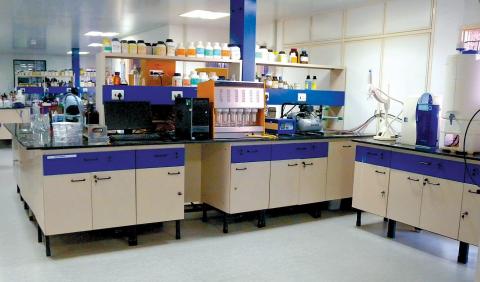GOOD LABORATORY PRACTICES
• All the apparatus used should be scrupulously washed and kept clean.
• If a grease film persists even after cleaning with a detergent, prepare chromic acid by adding 100 ml conc. H2SO4 to approximately 3.5 ml of saturated potassium dichromate solution. The mixture can be reused till it becomes greenish. The dichromate will strongly adhere to the glass surface. Wash it with ordinary water and finally with distilled water.
• Do not add water to acids as it leads to spurting.
• Use fume cupboards to protect against any types of fumes.
• If you happen to suck the acid into your mouth, wash repeatedly with copious amount of water.
• The last drop in the pipette should not be blown off, as it is not counted in the calibration of the pipette.
• As a general rule, calibrated glasswares viz. pipettes, burettes, measuring cylinders should not be heated or cooled rapidly as it will lead to change in volume.
• Animal nutrition laboratory (Fig. 6.1) should be well ventilated and provided with exhaust fans for effective removal of fumes.
• Use protective materials like apron, goggles, gloves etc. depending on the need. This will protect against artistic holes in your clothes.
Fig. Animal nutrition laboratory
In case of fire victims, put off fire by covering with blanket or gunny jute cloth and rolling the person on the floor. To put out fire and to cool the affected skin, water should be applied in large amounts. Formation of blisters due to water application will enhance the curing.
• Know the location and operation of the fire extinguisher.
• Never try to carry out unauthorized or unassigned adventures. Violation of this may cause unexpected material damage and physical injury.
• Label your reagent bottles, standards and all solutions immediately after preparation.
Read labels carefully before using any of the reagents.
• Do not move the reagent bottles to your bench from the side-shelf. Return them to their proper places on the shelf after use.
• In any laboratory, remember that individual security alone makes collective security possible.
• There should be restricted entry into the laboratory. The analyst has to restrict the number of entries into the laboratory. Outsiders except visitors should not be allowed inside laboratory for chitchatting and other discussions. All personal communications shall be outside the laboratory.

